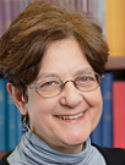Detectable clonal mosaicism and its relationship to aging and cancer Journal Article
| Authors: | Olson, S. H.; Yeager, M.; Zhou, W.; Wacholder, S.; Wang, Z.; Rodriguez-Santiago, B.; Hutchinson, A.; Deng, X.; Liu, C.; Horner, M. J.; Cullen, M.; Epstein, C. G.; Burdett, L.; Dean, M. C.; Chatterjee, N.; Sampson, J.; Chung, C. C.; Kovaks, J.; Gapstur, S. M.; Stevens, V. L.; Teras, L. T.; Gaudet, M. M.; Albanes, D.; Weinstein, S. J.; Virtamo, J.; Taylor, P. R.; Freedman, N. D.; Abnet, C. C.; Goldstein, A. M.; Hu, N.; Yu, K.; Yuan, J. M.; Liao, L.; Ding, T.; Qiao, Y. L.; Gao, Y. T.; Koh, W. P.; Xiang, Y. B.; Tang, Z. Z.; Fan, J. H.; Aldrich, M. C.; Amos, C.; Blot, W. J.; Bock, C. H.; Gillanders, E. M.; Harris, C. C.; Haiman, C. A.; Henderson, B. E.; Kolonel, L. N.; Le Marchand, L.; McNeill, L. H.; Rybicki, B. A.; Schwartz, A. G.; Signorello, L. B.; Spitz, M. R.; Wiencke, J. K.; Wrensch, M.; Wu, X.; Zanetti, K. A.; Ziegler, R. G.; Figueroa, J. D.; Garcia-Closas, M.; Malats, N.; Marenne, G.; Prokunina-Olsson, L.; Baris, D.; Schwenn, M.; Johnson, A.; Landi, M. T.; Goldin, L.; Consonni, D.; Bertazzi, P. A.; Rotunno, M.; Rajaraman, P.; Andersson, U.; Freeman, L. E. B.; Berg, C. D.; Buring, J. E.; Butler, M. A.; Carreon, T.; Feychting, M.; Ahlbom, A.; Gaziano, J. M.; Giles, G. G.; Hallmans, G.; Hankinson, S. E.; Hartge, P.; Henriksson, R.; Inskip, P. D.; Johansen, C.; Landgren, A.; McKean-Cowdin, R.; Michaud, D. S.; Melin, B. S.; Peters, U.; Ruder, A. M.; Sesso, H. D.; Severi, G.; Shu, X. O.; Visvanathan, K.; Kurtz, R. C. |
| Article Title: | Detectable clonal mosaicism and its relationship to aging and cancer |
| Abstract: | In an analysis of 31,717 cancer cases and 26,136 cancer-free controls from 13 genome-wide association studies, we observed large chromosomal abnormalities in a subset of clones in DNA obtained from blood or buccal samples. We observed mosaic abnormalities, either aneuploidy or copy-neutral loss of heterozygosity, of >2 Mb in size in autosomes of 517 individuals (0.89%), with abnormal cell proportions of between 7% and 95%. In cancer-free individuals, frequency increased with age, from 0.23% under 50 years to 1.91% between 75 and 79 years (P = 4.8 × 10 -8). Mosaic abnormalities were more frequent in individuals with solid tumors (0.97% versus 0.74% in cancer-free individuals; odds ratio (OR) = 1.25; P = 0.016), with stronger association with cases who had DNA collected before diagnosis or treatment (OR = 1.45; P = 0.0005). Detectable mosaicism was also more common in individuals for whom DNA was collected at least 1 year before diagnosis with leukemia compared to cancer-free individuals (OR = 35.4; P = 3.8 × 10 -11). These findings underscore the time-dependent nature of somatic events in the etiology of cancer and potentially other late-onset diseases. © 2012 Nature America, Inc. All rights reserved. |
| Keywords: | adult; aged; middle aged; major clinical study; solid tumor; neoplasm; neoplasms; genetic association; risk; cancer genetics; chromosome aberration; aging; heterozygosity loss; chromosome aberrations; autosome; aneuploidy; dna determination; mosaicism |
| Journal Title: | Nature Genetics |
| Volume: | 44 |
| Issue: | 6 |
| ISSN: | 1061-4036 |
| Publisher: | Nature Publishing Group |
| Date Published: | 2012-05-06 |
| Start Page: | 651 |
| End Page: | 658 |
| Language: | English |
| DOI: | 10.1038/ng.2270 |
| PROVIDER: | scopus |
| PMCID: | PMC3372921 |
| PUBMED: | 22561519 |
| DOI/URL: | |
| Notes: | --- - "Cited By (since 1996): 2" - "Export Date: 2 July 2012" - "CODEN: NGENE" - "Source: Scopus" |
Altmetric
Citation Impact
BMJ Impact Analytics
Related MSK Work





